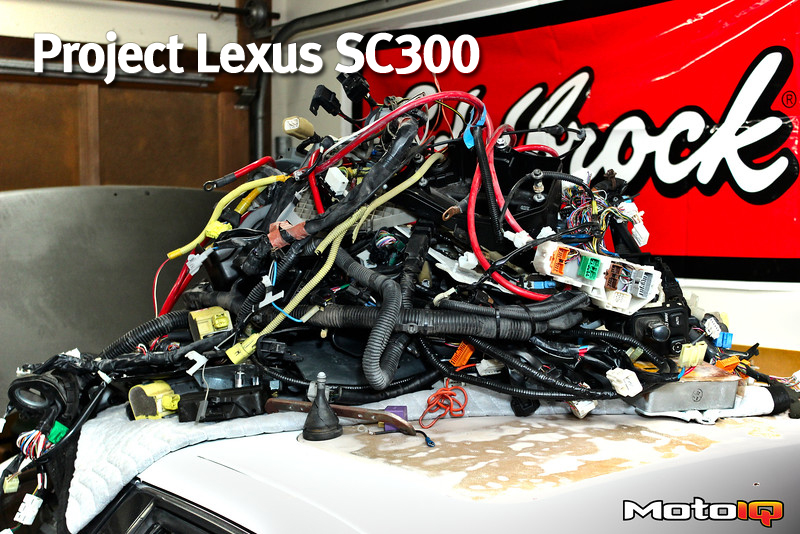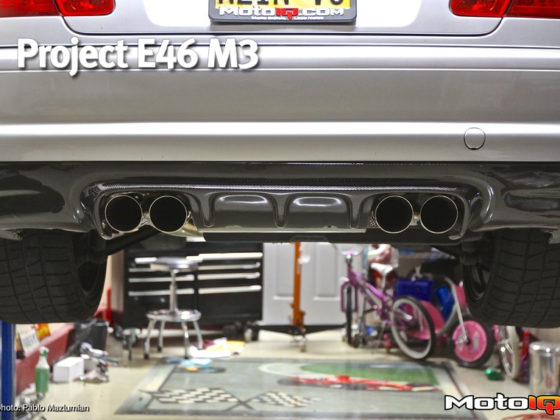,
 Toyota, since they were designing for assembly line production and street driving, made use of a lot of formed plastic components with wires inside.
Toyota, since they were designing for assembly line production and street driving, made use of a lot of formed plastic components with wires inside.These, too, had to be snaked out from behind the dashboard support and steering column. I really had to bring my Tetris A-game. Why not just cut everything out? While I was confident that I would not be reusing any factory components, there’s no haste required in gutting the car. There's no prize here for finishing first. And it’s always nice to have factory connectors around if you need one in a pinch.
 Here’s an example of some of the wiring work that had been done previously.
Here’s an example of some of the wiring work that had been done previously.This type of thing is pretty typical of what people try to use in race cars, which ultimately fails. That’s not to say that there isn’t a place for crimp connections, but there is a proper motorsports way to do them and this is not it. This quality work was on Defi gauges, which use a special communications bus in order to operate. While the gauge on the left was at the end of the daisy chain, what if it was one of the first gauges? A failure here could have easily taken out all of the gauges. The tach never worked from the day I got the car, and there was no speedometer. It’s not much fun doing track days with no speedometer AND no tachometer. Trust me. People look at you funny when you tell them that. But I digress.
 What do these even do?
What do these even do?Two in-line fuses, badly spliced, somewhere near the steering column. These are likely coming off of ignition power and going… somewhere. Do they even serve a purpose? Don’t dare remove them! And, if you didn’t know this was lurking behind the dashboard or under the steering column cover, how long would it take you to find it?
 Once you really start to get some of the wiring out of a car, you will probably start to panic. I did. You reach a point where you realize that there is no turning back. You can’t stop because too much stuff is gone, but going forward seems terrifying.
Once you really start to get some of the wiring out of a car, you will probably start to panic. I did. You reach a point where you realize that there is no turning back. You can’t stop because too much stuff is gone, but going forward seems terrifying.To give you some background on myself: I attended Columbia University’s engineering school and received a bachelor’s degree in electrical engineering. It doesn’t mean I can fix your refrigerator. In fact, I actually studied microelectronic circuit design – how to engineer microchips. I have a solid understanding of electrical fundamentals. I have a good understanding of the fundamentals of how engine electronics work, too. But when it comes to actually pinning connectors and doing harness work, I have next to zero experience. In fact, my one shot at doing automotive-related electrical engineering came very early on while I was still in college (around the year 2000) and autocrossing a lot. I hooked up with Unorthodox Racing and was going to design an electronic cooling fan controller for them. I even have the signed contract somewhere. The project never happened, and there went my automotive electronics career.
 Fortunately, I happen to have some connections in the industry who work on very high-end motorsports electronics projects.
Fortunately, I happen to have some connections in the industry who work on very high-end motorsports electronics projects. Here’s Ed Senf making fun of my car, which we do together often. Ed has worked with Kia Racing, Rum Bum Racing, myriad other World Challenge teams, Continental/Rolex/Tudor/whatever teams, and more. He likes to say he won’t work on a car if it has a license plate. Lucky for me I stopped registering the SC300 for the street.
Actually, that’s a lie. It has a cat and even passed emissions!
A few years ago…



